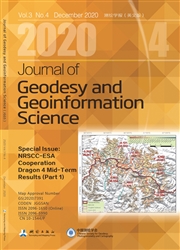Microlens Light Field Imaging Method Based on Bionic Vision and 3-3 Dimensional Information Transforming
作者:Shoujiang ZHAO,Fan LIU,Peng YANG,Hongying ZHAO,Anand ASUNDI,Lei YAN,Haimeng ZHAO
摘要:his paper adopts the 3-3-2 information processing method for the capture of moving objects as its premise, and proposes a basic principle of three-dimensional (3D) imaging using biological compound eye. Traditional bionic vision is limited by the available hardware. Therefore, in this paper, the new-generation technology of microlens-array light-field camera is proposed as a potential method for the extraction of depth information from a single image. A significant characteristic of light-field imaging is that it records intensity and directional information from the lights entering the camera. Herein, a refocusing method using light-field image is proposed. By calculating the focusing cost at different depths from the object, the imaging plane of the object is determined, and a depth map is constructed based on the position of the object’s imaging plane. Compared with traditional light-field depth estimation, the depth map calculated by this method can significantly improve resolution and does not depend on the number of light-field microlenses. In addition, considering that software algorithms rely on hardware structure, this study develops an imaging hardware that is only 7 cm long based on the second-generation microlens camera’s structure, further validating its important refocusing characteristics. It thereby provides a technical foundation for 3D imaging with a single camera.
发文机构:The Institute of Remote Sensing and Geographic Information System The School of Mechanical and Aerospace Engineering The School of Information Engineering
关键词:BIONICcompoundeyesingle-shotlightfield3D-3DtransformimagingMICROLENSESSTEREOPHOTOGRAMMETRY
分类号: P[天文地球]
- Near-zone Direct and Indirect Topographic Effects Based on the Rectangular Prism and Surface Element
- Satellite Positioning and Orbit Determination System(SPODS):Introduction and Evaluation
- Solar Radiation Pressure Modeling and Application of BDS Satellites
- Journal of Geodesy and Geoinformation Science Aims and Scopes
- Object Detection Research of SAR Image Using Improved Faster Region-Based Convolutional Neural Network
- Parameter Group Optimization by Combining CUBE with Surface Filtering and Its Application
- MHSS ARAIM Algorithm Combined with Gross Error Detection
- Automatic Matching of Multi-scale Road Networks under the Constraints of Smaller Scale Road Meshes
- Applicability of Bevis Formula at Different Height Levels and Global Weighted Mean Temperature Model Based on Near-earth Atmospheric Temperature
- Satellite Image Matching Method Based on Deep Convolutional Neural Network


